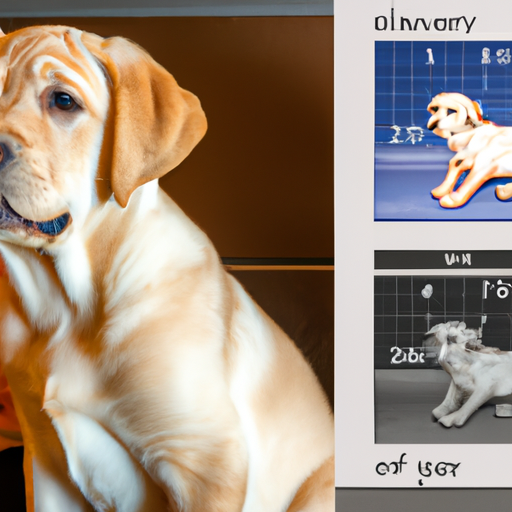Labradors are one of the most loved and popular breed of dogs worldwide. Their friendly nature, intelligence, and boundless energy make them an excellent choice for families, hunters, and service roles. As a caregiver, you might be wondering, “When are labs fully grown?” This is a crucial question, as it helps you know when to switch from puppy food to adult dog food, when to start specific training, and what kind of exercise routines are appropriate.
Understanding Labrador’s Growth Cycle
Labrador retrievers have a varied growth rate. Most labs will reach their full height by their first birthday, but they will continue to fill out and gain weight until they are two to three years old.
Here’s a general timeline:
- Birth to two weeks: During this phase, labs experience rapid growth. They will double their birth weight within the first week.
- Two weeks to four months: This is the most critical growth phase. By four months, most labs will be around half of their full adult size.
- Four months to one year: The growth rate slows down, but they will continue to grow both in height and weight.
- One year to three years: Labs will mostly gain weight and muscle during this period until they reach their full adult size.
Factors Affecting a Labrador’s Growth
Various factors can affect the growth rate of a lab:
- Genetics: Just like humans, a lab’s genetics play a considerable role in determining their growth rate and adult size.
- Diet: A balanced diet is crucial in ensuring a steady growth rate.
- Exercise: Regular, age-appropriate exercise helps in maintaining a healthy growth rate.
- Health: Any health issues can also affect a lab’s growth.
Recognizing When Your Lab is Fully Grown
It might be challenging to determine when your lab is fully grown, but there are signs you can look out for:
- Physical changes: Your lab’s growth will slow down. They will reach their maximum height and their body will start filling out.
- Behavioral changes: You might observe a slight decrease in your lab’s energy levels and an increase in maturity.
The Importance of the Growth Cycle
Understanding the growth cycle of your lab is essential for several reasons:
- Proper feeding: Knowing when to switch from puppy food to adult food is crucial to ensure your lab gets the right nutrients.
- Training: Different training methods are appropriate for different growth phases.
- Exercise: Young labs require different amounts and types of exercise than older labs.
Feeding Your Labrador
| Age | Type of Food | Frequency |
|---|---|---|
| Birth to 4 months | Puppy food | 4 times a day |
| 4 to 6 months | Puppy food | 3 times a day |
| 6 months to 1 year | Puppy food | 2 times a day |
| 1 year and beyond | Adult food | 2 times a day |
FAQs
Q: Can I speed up my lab’s growth?
A: It’s not advisable to speed up your lab’s natural growth. Let them grow at their own pace to avoid health complications.
Q: When should I neuter or spay my lab?
A: Most vets recommend neutering or spaying between six and nine months, but it’s best to consult with your vet for the most suitable time.
Q: How can I ensure my lab grows healthily?
A: Provide a balanced diet, regular exercise, and routine check-ups with the vet.
Q: Is my lab overweight?
A: If you can’t feel your lab’s ribs or see their waistline, they might be overweight. It’s best to consult your vet.
Conclusion
In conclusion, labs are fully grown between the ages of two to three years. Remember, each lab is unique, and their growth rate can vary. As a caregiver, it’s important to ensure they’re getting a balanced diet, regular exercise, and plenty of love during all stages of their growth.



